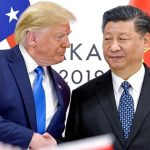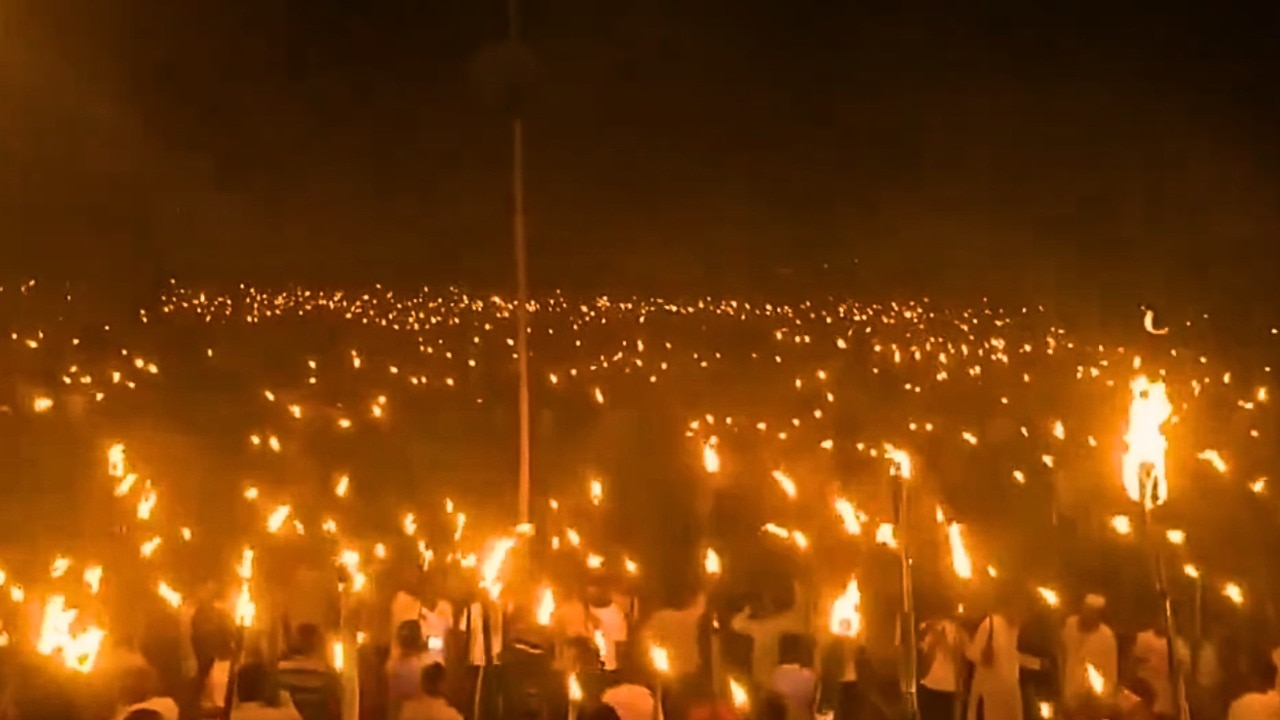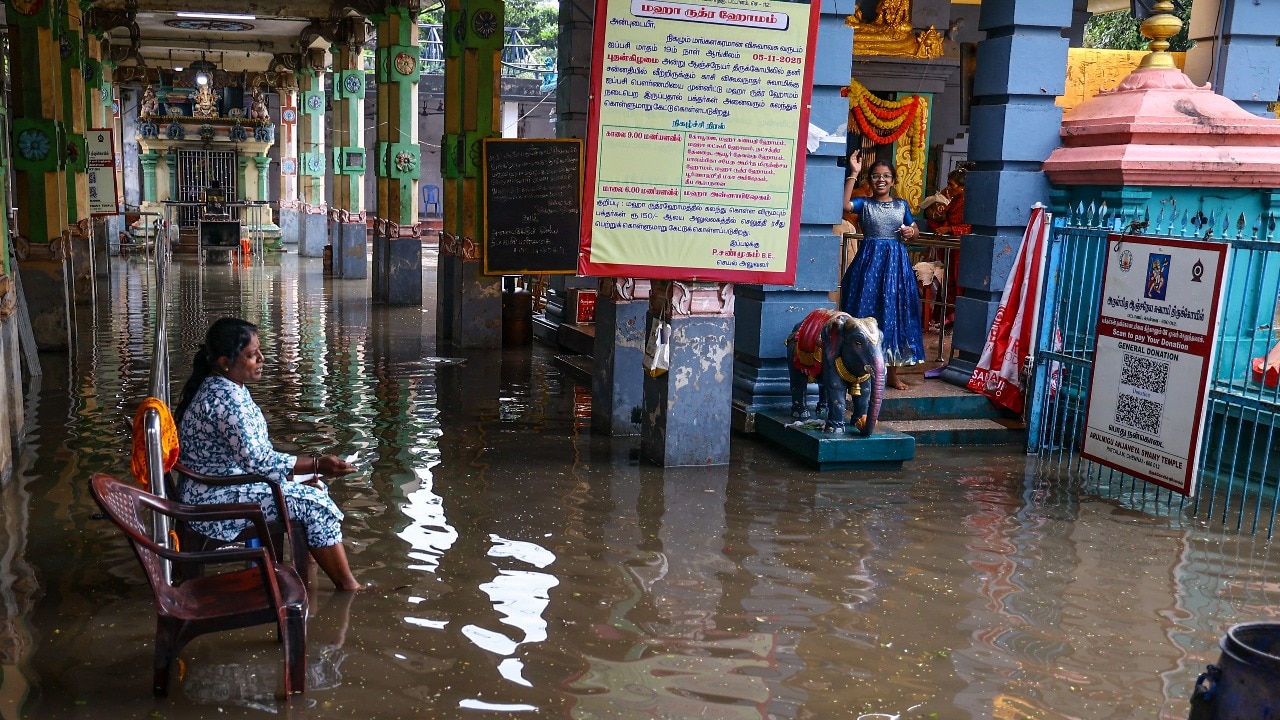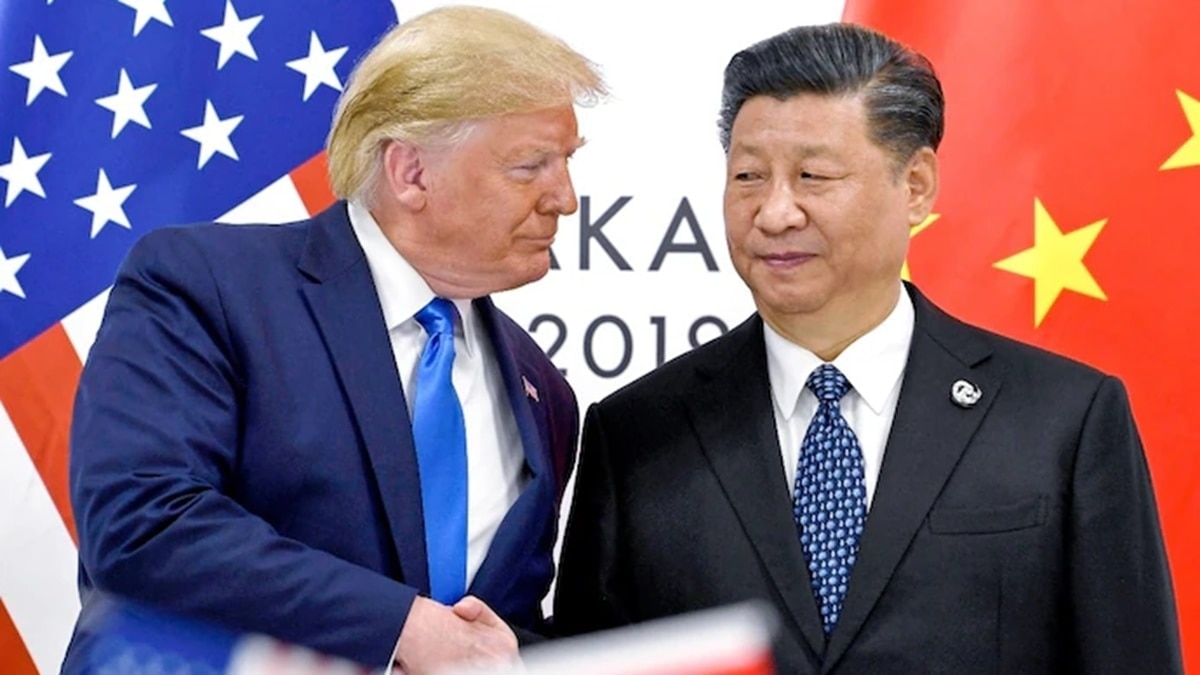On the evening of October 19, hundreds of people formed a human chain near Chittagong University’s Shaheed Minar. They held placards and mashaal torches in their hands as they marched to the Minar. They demanded an immediate implementation of the Teesta Master Plan and Bangladesh’s “fair share” of Teesta water, reported news agency Bangladesh Sangbad Sangstha (BSS).
Reportedly organised by students from Rangpur division, slogans were raised against water injustice and India’s alleged influence on Bangladesh’s water policies. Speakers said the Teesta plan could transform northern Bangladesh by boosting agriculture, creating jobs, and driving national growth.
The rally ended with a call to “protect national interests and ensure water justice for Teesta-dependent regions” in Bangladesh, reported the BSS.
The protest in Chattogram on Sunday came after a wave of torchlight rallies across Northern Bangladesh on Thursday evening, where thousands gathered in five districts of the Rangpur division demanding the immediate implementation of the Teesta River Master Plan, reported the Dhaka Tribune.
The Teesta Master Plan, backed by China, is being seen in Bangladesh as a workaround to the long-stalled Teesta water-sharing deal with India. Experts, meanwhile, view the plan with concern, especially due to its proximity to the strategic Chicken’s Neck and potential Chinese presence near the sensitive Siliguri Corridor, which is a 20-kilometre land route connecting the northeastern states to the rest of India.
WHY ARE TENSIONS RISING OVER TEESTA MASTER PLAN?
The demand now assumes importance because the Teesta Master Plan, a Chinese-backed initiative for river management, promises to address northern Bangladesh’s water scarcity amid stalled water-sharing talks with India. With the 1996 Ganga Water Sharing Treaty nearing its expiry in 2026, the urgency to implement the unilateral plan near the strategic Chicken’s Neck, with a third-party (China), the intense push for the plan’s implementation raises concerns of being detrimental to India’s water security and regional cooperation.
The Teesta River originates in the eastern Himalayas in the state of Sikkim, flows through West Bengal, and then enters Bangladesh, and joins the Brahmaputra (Jamuna). The river has long been at the centre of water-sharing negotiations between Bangladesh and India. Bangladesh alleges that during the lean season, when water levels are low, India restricts the flow of Teesta River water, causing severe shortages for agriculture and daily use. During the monsoon season, Bangladesh faces flooding and has demanded better management and equitable sharing to ensure sufficient water supply throughout the year.
However, a deal has not been reached yet between the two riparian states.
The protests across Bangladesh come months after its interim government chief, Muhammad Yunus, sought a 50-year river management master plan from Beijing in March, praising China as the “master of water management” and including the Teesta River in the proposal. In March after Yunus met Chinese President Xi Jinping, the joint statement issued said Bangladesh welcomed Chinese companies to participate in the Teesta River Comprehensive Management and Restoration Project (TRCMRP).
These protests also follow growing public pressure in Bangladesh, with many voices urging the government to move ahead with the Teesta Master Plan with Chinese cooperation. Bangladesh sought 6,700 crore taka in financial aid for the project’s first phase.
These protests also come amid growing public and political pressure in Bangladesh, with many urging the government to advance the Teesta Master Plan with Chinese support, especially as post-Hasina Dhaka has gravitated towards Beijing, and joined the Chinese Belt and Road Initiative. The Bangladesh Nationalist Party (BNP), whose de-facto chief and son of former PM Khaleda Zia, Tarique Rahman, had voiced support for the plan, was also said to be backing it.
Former Cabinet Secretary of Bangladesh, Kabir Bin Anwar, earlier this year told the UK-based The Independent that the project would enable Bangladesh to construct a large water reservoir to store water for the dry season, reducing the country’s reliance on India to release water during the lean months.
WHAT IS THE INDIA-BANGLADESH TEESTA DISPUTE?
The Teesta dispute between India and Bangladesh revolves around the sharing of water from the Teesta River, which originates in India and flows into Bangladesh.
Bangladesh demands a “fair share” of the river’s water to support agriculture and meet growing water needs in its northern regions. India, particularly West Bengal, has raised concerns over water availability during dry seasons, fearing that sharing more water could harm its own farmers.
Despite several rounds of negotiations since the 1990s, a final agreement has remained elusive due to political sensitivities and the Bengal government’s repeated opposition in India. Although both countries recognise the importance of resolving the dispute, recent developments, including Bangladesh’s move to seek Chinese assistance for river management, have complicated the situation, stalling progress on a long-awaited water-sharing deal.
In 2024, then-Bangladesh PM Sheikh Hasina explicitly stated her preference for India over China to implement the Teesta River Comprehensive Management and Restoration project.
WHY CHINA’S INVOLVEMENT IN TEESTA IS A RED FLAG FOR DELHI?
The Teesta Master Plan near the strategic Chicken’s Neck, combined with reports of a potential Chinese presence at Lalmonirhat airbase nearby, has raised serious strategic concerns for India, according to experts. However, the Bangladesh Army’s Directorate of Military Operations official, Brigadier (now Major General) Mohammad Nazim-ud-Daula, had in May said that the airbase was being revived to “support national needs, including the Aviation and Aerospace University”. He clarified that there was “no information about Chinese involvement”.
“India has concerns about Chinese personnel establishing a presence at the project site located near the Chicken’s Neck,” Bangladeshi expert on power, energy, and environment, Kallol Mustafa, wrote in a piece in the Dhaka-based Daily Star.
Geopolitical expert Brahma Chellaney had earlier highlighted Bangladesh’s plans to shift the Teesta River project to China and to revive the Lalmonirhat with Chinese assistance. Both projects, located close to the Indian border, have significant security implications for India, he argued.
Chellaney said that the activation of the Lalmonirhat airbase “would greatly enhance China’s ability to conduct aerial surveillance and reconnaissance on Indian military installations, troop movements and critical infrastructure”.
“Both projects, located near the Indian border, carry significant implications for India’s security…,” Chellaney said in May.
The push for the Teesta Master Plan, intertwined with Chinese involvement, reveals that the unresolved water-sharing dispute with India is entering a new and more complex phase. That these public demands are surfacing just months ahead of Bangladesh’s general elections may suggest political undercurrents, with the BNP potentially leveraging the issue to gain ground. With Dhaka walking a tightrope, Teesta’s waters remain as politically charged as they are essential.
– Ends










